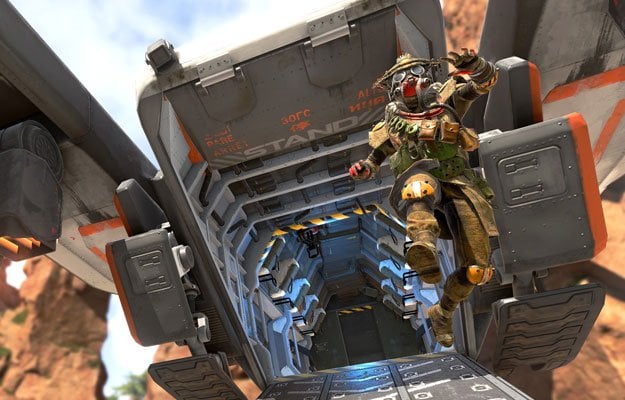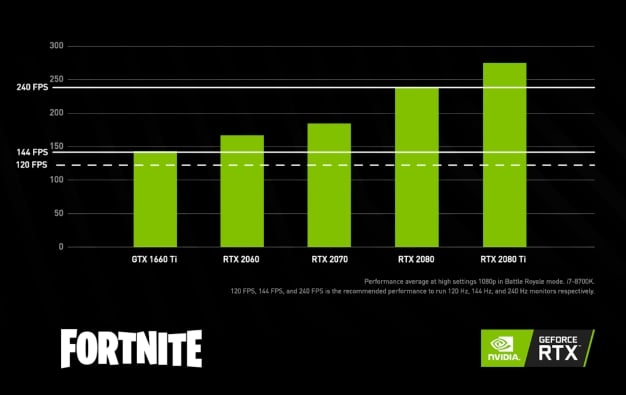Powerful PCs Proven To Help Players Dominate In Battle Royale Games Like Apex Legends

With this in mind, eSports professionals and mainstream gamers alike are looking for any way possible to gain an advantage over the competition in these intense battle royale slugfests. It used to be that 60 fps was the holy grail for gamers looking for smooth, stutter free visuals while blasting away at their human-controlled foes on the screen. However, as our GPUs have grown immensely more powerful over the years, that high watermark according to NVIDIA – at least for the eSports crowd – has risen to 144 fps, backed by 144Hz gaming monitors.
NVIDIA wanted to take a closer look at the kill-to-death (K/D) ratio for some of the most popular battle royale games on the market, and how a higher frame rate can affect this performance statistic. We should clearly point out that while this analysis was performed by NVIDIA using anonymized data from the GeForce Experience software suite, the same basic premise could be applied to any modern graphics card including Radeon RX offerings from AMD (which an also deliver 144+ fps gaming at 1080p resolution).
NVIDIA first looked at an increase in the K/D ratio based on the amount of hours played per week using the GeForce GTX 1050/Ti, GTX 1060, GTX 1070/Ti and GTX 1080/Ti in Fortnite and PUBG. The plot showed that if gamers only played a few hours a week, or for professionals that play upwards of 40 hours per week, there was an increase in the K/D ratio with higher-performing hardware. The correlation, according to NVIDIA, is that higher-end hardware -- a combination of a powerful GPU and a fast monitor that can deliver increased frame rate and refresh rate -- tends to lead to a better result for battle royale players.
The data also shows that the K/D ratio spread between high-end and low-end graphics hardware actually increased as the number of hours per week increased. So more experienced gamers actually benefit even more from the additional performance.
The numbers also showed that when NVIDIA’s graphics hardware is linked up with a 144Hz monitor, there was a steady increase in the K/D ratio as results from a baseline GeForce GTX 1050/Ti worked their way up through the current generation GeForce RTX 20xx family of Turing GPUs. We should mention again that these same trends should also be applicable to AMD’s Radeon RX 580/590, Radeon RX Vega series and the Radeon VII (which should be comparable to the GeForce RTX 2070 or 2080 performance-wise).
With higher fps comes lower latency, which should help give you an advantage on the playing field. With that in mind, a 240Hz monitor would also provide a response time advantage over 144Hz, but the hardware needed to provide a consistent 240 fps in all of today’s battle royale titles isn't quite there yet, unless you have at least GeForce RTX 2080-class firepower on board.
Looking at individual game performance below, you can see what kind of hardware you’ll need to achieve 144 fps and 240 fps in the competitive eSports realm at 1080p resolution (High). Apex Legends maxes out at about 200 fps with current generation hardware, but provides a consistent a consistent 144 fps gaming experience. Both the GeForce RTX 2080 and RTX 2080 Ti can provide 240 fps performance in Fortnite. Not even the burly GeForce RTX 2080 Ti can deliver consistent 200 fps in PUBG, but both it and the RTX 2080 can deliver on the 144 fps promise at 1080p.
We should mention that NVIDIA’s analysis is only looking at this from the aspect of your GPU hardware giving you the ultimate edge. But there are other things to consider like how fat your internet pipe is and what kind of latency you’re dealing with, or how well you’re optimized the game for peak performance, or even the skill level of the players in the data accumulated. Elite gamers are likely to have high end hardware like a Radeon RX Vega 64 or a GeForce RTX 2080, but not everyone that owns a Radeon VII or GeForce RTX 2080 Ti is going to magically become a killing machine in Apex Legend because of the graphics card in their rig.
Of course, as with anything that has a "human" factor built in, your mileage may vary. If you're reading HotHardware, chances are that you're already gaming-inclined and you probably trend to the higher end of the spectrum with gaming hardware. The only question is, are you an elite killing machine with your killer rig, or are you the type of player that is mowed-down within the first few minutes of a match? Perhaps a GPU upgrade is in order?







